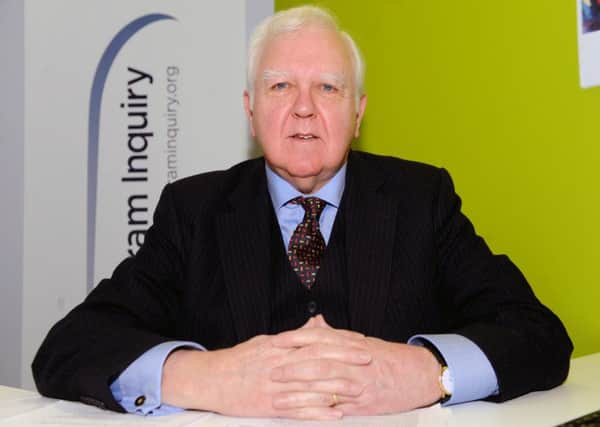Ian Swanson: Will tram inquiry point the finger of blame?


Many will hope that individuals are going to be singled out for blame over the repeated delays, the soaring cost and the whole chaotic saga which ended up with the city paying twice the price for about half the route. Prosecutions have not been ruled out.
When Lord Hardie was appointed by the then First Minister Alex Salmond to lead the inquiry in 2014 it was noted that he had been seen as Scotland’s toughest judge while he was on the bench, with a reputation for handing down harsh punishments.
Advertisement
Hide AdAdvertisement
Hide AdSo those eager for key figures to be held responsible may get what they are looking for.
On the other hand, faced with the complex history of the project and the many different characters involved, Lord Hardie may conclude, as Lord Fraser of Carmyllie did in his report on the Holyrood building inquiry back in 2004, that there was “no single villain of the piece”.
The Holyrood inquiry heard how the original £40m estimated cost of the new parliament building escalated to £431m.
Lord Fraser cleared the late First Minister Donald Dewar of misleading MSPs about the cost and refused to heap blame on the Catalan architect Enric Miralles for the delays and cost overruns.
Advertisement
Hide AdAdvertisement
Hide AdBut he said he was “astonished” that ministers had been kept so much in the dark about the increasing costs and highlighted the decision to go for a construction management contract, which prioritised rapid delivery over everything else, as the biggest mistake on the project.
The tram inquiry has heard about difficult relations between the council and its tram firm TIE, a breakdown in the relationship between TIE and the contractors, aggressive approaches to disputes and figures being manipulated.
Whatever Lord Hardie’s eventual verdict, and whatever the public reaction, the tram inquiry has succeeded in laying bare what went on behind the scenes in the Capital’s biggest construction project for years.
Lord Hardie was able to invite – and compel if necessary – key players to give evidence and face sometimes tough questioning on what they did or didn’t do that might have contributed to the problems.
Advertisement
Hide AdAdvertisement
Hide AdHundreds of documents – internal emails, confidential reports, briefings and notes – which would not normally have seen the light of day have been exposed to the public glare.
Politicians, civil servants, employees from the council and TIE were put under the spotlight.
But so were people from the private sector – contractors, consultants and company bosses who made a lot of money out of the project.
And although attendance in the public gallery during the 18 weeks of evidence sessions may have been sparse to say the least, people were able to read all about it.
Advertisement
Hide AdAdvertisement
Hide AdLord Hardie will doubtless have some carefully considered recommendations to make in the hope of avoiding any repeat of the trams fiasco.
But the tram inquiry, like the Holyrood one before it, is also an important democratic exercise in holding powerful people to account.
